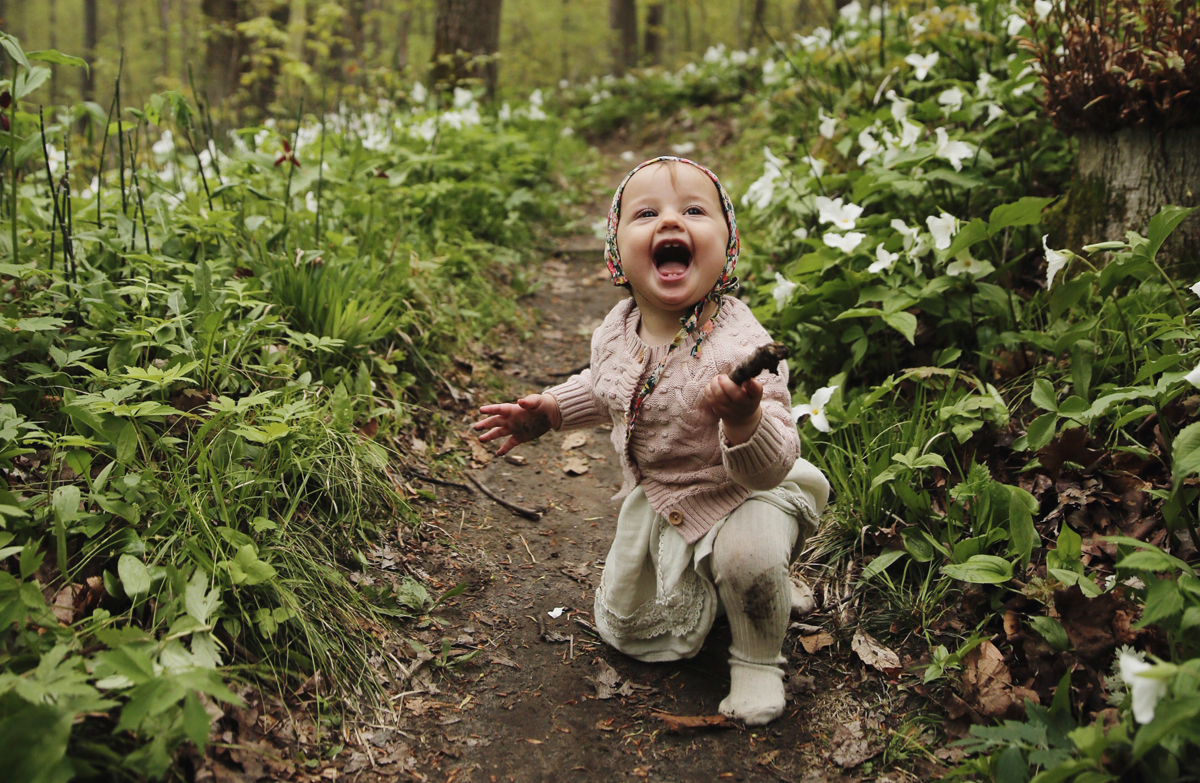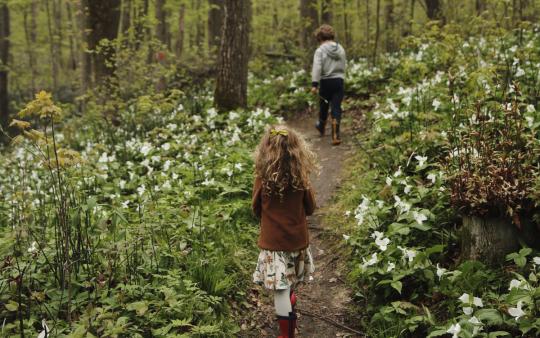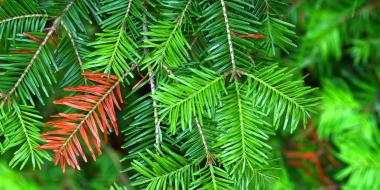As the world unravels in the wake of COVID-19, I encourage my kids to get outdoors. And as our rain boots navigate the tree roots that criss-cross the forest floor, I'm struck by the connectivity of the forest and the world beyond our tree-topped Bowen Island home off the coast of Vancouver. It's no secret that a walk in the woods makes everyone feel better. Not only does the forest boost your immune system, it can also help reduce stress: the perfect antidote for life during the dark days of a pandemic. When we introduce kids to the wonders and biodiversity of forests, they will be more likely to protect them for future generations, and right now, protecting forests around the world may be vital in preventing future pandemics.
Log jam: eroding wild spaces
For years, scientists have warned us that logging our tropical forests risks unleashing dangerous viruses, as the distance between wildlife and human-made environments become smaller and smaller. It has happened before with malaria, Ebola, SARS, and now with COVID-19 it has happened again. In late 2019, the virus spread from Wuhan, China, to some of the most remote regions in the world. COVID has been reported in places like Nunavut, Canada, deep in the Democratic Republic of Congo and even in a vast, remote region of the Amazon that is home to one of the greatest concentrations of isolated Indigenous groups on the globe. Virtually no population on Earth has been unaffected.
According to United Nations Environment Program Executive Director Inger Andersen, "Our continued erosion of wild spaces has brought us uncomfortably close to animals and plants that harbour diseases that can jump to humans." She goes on to warn that, "Nature is sending us a message with the coronavirus pandemic. Failing to take care of the planet means not taking care of ourselves." This statement is echoed by Wade Davis, anthropologist and ethnobotanist at the University of British Columbia, who points out that although COVID is “a microscopic parasite 10,000 times smaller than a grain of sand,” it has “commandeered our biology," and has "effectively attacked the very bonds of community and connectivity, our fundamental defence mechanism."
Davis' point is a good one. As the pandemic keeps us isolated from our families and social connections, we’ve seen further evidence of social breakdown, such as higher rates of unemployment, anxiety, depression, and poverty. Our kids are dealing with the enormity of the pandemic, as they are forced to adapt to changes in their lives and schooling, and their digital virtual reality is creating new levels of anxiety and isolation. "Community and connectivity, for the humans, are what claws and teeth represent to the tiger,” says Davis, whose many assignments include the post of “explorer in residence” at the National Geographic Society.

Perfect storm: deforestation and pathogens
A recent study by the Intergovernmental Science-Policy Platform on Biodiversity and Ecosystem Services (IPBES) reports that roughly 30 percent of emerging infectious diseases that spill over into humans from wildlife are caused by deforestation or land-use change. According to David Boyd, UN Special Rapporteur on Human Rights and Environment and a professor at the University of British Columbia, our current predicament is a “perfect storm” where human actions like deforestation, land clearing for agriculture, the wildlife trade, and expanding settlements have not only damaged ecosystems and biodiversity, but, “Such activities elevate the risk of pathogens spilling over from wild and domestic animals to humans. Unprecedented levels of international air travel and trade accelerate the spread of the diseases.”
It’s not news that our planet's forests are under threat. Between 2015 and 2020, the rate of deforestation was estimated at 10 million hectares (24,710,538 acres) per year. And the more strain we put on those resources, the more likely it is that infectious diseases and pandemics will emerge. Add to that our response to COVID with heightened demand for paper products like 3-ply masks, PPE, and, of all things, toilet paper, we are inadvertently continuing to put pressure on that “perfect storm” of deforestation and encroaching civilization on the planet’s remaining wild spaces which could spell more disaster for our world.
The far-reaching consequences of the impacts of COVID on our environment should serve as a wake-up call. As Davis asserts, "The disruption of the natural ecosystems always has consequences that we don't anticipate in part because we don't really understand in any depth the complexity and sophistication of those biological relationships."
And while COVID shines a light on human destruction of nature and our societies, it also provides a powerful opportunity to reimagine these systems and shape a more sustainable future together, and as Davis points out, it’s important to remember “how unbelievably regenerative and capable of remediation and recuperation the world is.”
Developing alternatives to deforestation can help decrease the need for cutting trees. We can all be part of the solution. And as Davis notes, "What kind of world do we actually want to bequeath to our children? That's the fundamental existential question that everybody should be asking."
5 ways to protect forests and prevent pandemics
Supporting healthy biodiversity while averting deforestation can reduce the conditions that cause the spread of diseases transmitted from animals to humans. COVID-19 has provided an unprecedented opportunity to reimagine these systems and shape a more sustainable future together. Everyone can do their part to curb deforestation. Here are five ways we can help reduce future pandemics and leave a better world for our children.
- Teach your children to use fewer paper products by setting an example, limiting purchases, and opting for products that are recycled or are free from palm oil, a major driver of deforestation.
- Get your family outdoors to play and explore the wonders of nature. Go for a walk in a forest and talk about all the things trees do to help the world.
- Take action and support individuals and environmental groups working to protect forests.
- Read books about trees and forests.
- Plant a tree (or trees!) and return to care for it as it grows.
You may also enjoy: Why Children Need Nature for Future Well-Being, 6 Reasons Kids Should Go Camping, and Nurturing Your Child to be a Naturalist.









